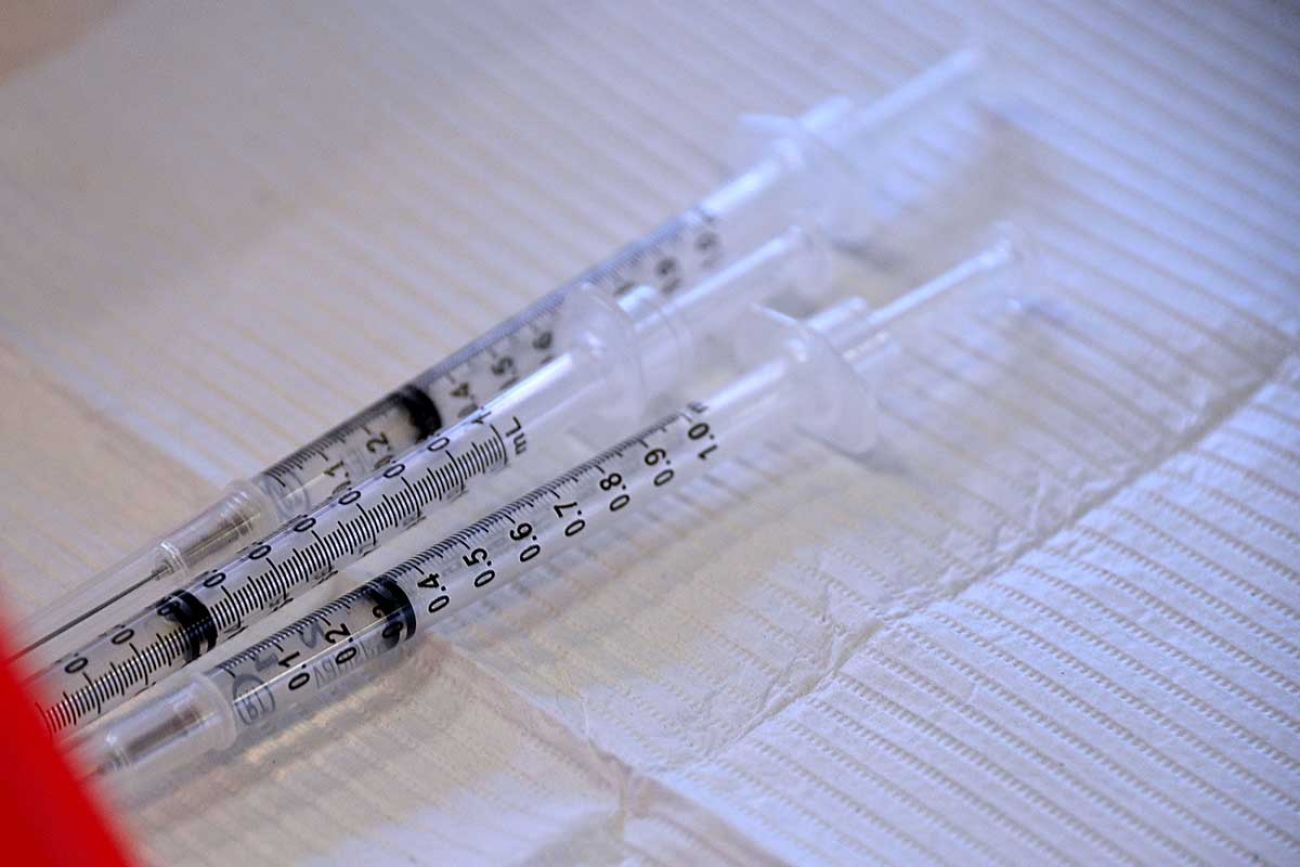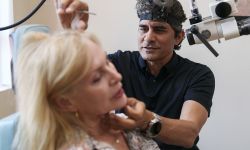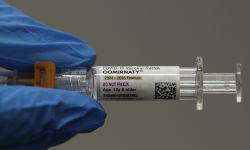Racial disparities in Michigan COVID-19 deaths all but gone, panel finds

- In 2020, African Americans in Michigan died at nearly twice the rate from COVID-19 as whites.
- By 2022, death rates from the coronavirus were nearly identical for Black and white people
- A state task force outlined a series of community testing and vaccination strategies it says helped reduce the COVID-19 death disparity
Three years after COVID-19 ravaged Black neighborhoods in metro Detroit, state officials on Monday said the coronavirus death rate among Black people in Michigan has now dropped to that of whites.
In 2020, Black Michiganders suffered death rates from the virus of 22.8 per 10,000 people ─ nearly double the death rate that year among white Michigan residents of 11.8 deaths per 10,000 people, according to the final report of a task force convened in 2020 by Gov. Gretchen Whitmer to boost survival from COVID-19 among Black residents.
Death rates for Black Michiganders fell to 16.2 per 10,000 in 2021 and to 8.6 per 10,000 in 2022, almost identical to the 2022 death rate among white people from the coronavirus at 8.7 deaths per 10,000.
Related:
- COVID-19 in 2022: Deaths fall, but Michigan had 5th most in US
- Food assistance cuts loom for 1.3 million Michiganders. No legislative action yet
- Medicaid review could drop 400,000 Michigan residents from coverage
“We’re really proud of the progress,” Lt. Gov. Garlin Gilchrist, who chaired Michigan’s COVID-19 Racial Disparities Task Force, told Bridge Michigan in an interview prior to announcement of the findings.
“It wasn’t one single thing that made a difference. It was really a combination of efforts.”
The report also noted that the drop in death rates for Black Michiganders — at 14.2 deaths per 10,000 — exceeded the national net drop in Black American death rates, which fell by 8.9 deaths per 10,000 population, from 15 per 10,000 to 6.1 deaths in 2022.
In April 2020, shortly after COVID-19 first hit, African Americans represented 14 percent of Michigan’s population, but they made up 40 percent of those dying from the coronavirus, most in the greater Detroit area.
That disparity was laid out in graphic terms that month as reports and photos emerged that Detroit's Sinai-Grace Hospital was stacking bodies of the dead from COVID-19 in vacant rooms and propped on chairs as the coronavirus surged in southeastern Michigan.
Brian Taylor, a spokesman for the DMC, told the Detroit Free Press that COVID-19 "has caused significantly greater than normal mortality rates in the Detroit community." Black residents make up about 78 percent of the city's population.
Advocates for health care reform note that the pandemic spotlighted an array of other racial health disparities in Michigan already evident for years. That includes higher rates of diabetes, asthma and death from heart disease and hypertension among African Americans than the overall population, according to a state report based on census data from 2018 to 2020.
The state report noted links to social determinants of health for African Americans that include factors like poverty and lack of access to health care that can lead to poor health outcomes.
Moreover, infant mortality among Black children in Michigan, while declining in recent decades, still stands at nearly three times the rate of white infant deaths.
Nearly 25 percent of Michigan’s Black population was at or below the federal poverty level from 2018 to 2020, compared to 12.3 percent of the overall state population. Twice the percentage of Black adults had no vehicle in their household compared to all state households, and 8.9 percent of the state African American population had no health insurance, compared to 6.5 percent of the state population.
Health care analysts say the reduction in African American deaths from COVID-19 suggests public health initiatives aimed at disparities in access and treatment can pay off.
“I think a lot of this can be credited to quick response and outreach (from the state) and getting vaccines out to those who need them,” said Jonathan Tsao, a researcher for the University of Michigan’s Center for Health and Research Transformation, a nonprofit health analysis organization.
Tsao said the steep reduction in deaths among Michigan African Americans may also be due to the fact that COVID-19 first hit areas of southeast Michigan with substantial Black populations, before moving on to other areas of the state.
“Those who suffer more from socio-economic factors were more susceptible to being exposed to COVID in the beginning, especially those who live in densely populated areas,” he said.
The task force report pointed to a number of strategies put in place over the past three years that paid off in reducing racial COVID-19 death disparities:
Neighborhood test sites
In August 2020, the task force supported test collection and test teams in 22 neighborhoods across Michigan, concentrated in Metro Detroit and Flint. The selected sites were easy to travel to and “considered staples in their communities ” — places familiar to neighborhood residents — according to the report.
Between August 2020 and November 2022, neighborhood test sites hosted 7,365 different testing events and administered at least 364,104 COVID-19 tests, according to the report. Of those who provided racial information, 57 percent were Black.
Mobile health units
Beginning in November 2020, nine mobile health units were launched in Genesee, Ingham, Kent, Muskegon, Wayne Counties, largely focused in areas with large Black populations.
Since June 2021, the mobile units have administered 52,460 COVID-19 tests and 28,308 COVID-19 vaccinations, according to the report.
Homebound vaccination
According to the report, Michigan’s Department of Health and Human Services collaborated with the Detroit Area Agency on Aging to provide COVID-19 vaccines to seniors who were not able to leave their homes in the Detroit area. MDHHS later partnered with area agencies on aging across the state and by April 2021 had vaccinated about 21,000 homebound seniors.
Test to Treat sites
Test to Treat is a federally funded telehealth program targeted at access to lifesaving oral COVID-19 treatment including the drug Paxlovid for individuals at high risk. According to the task force report, Michigan was the first state to fully implement the program and the only state to roll out the program at community and neighborhood testing sites that ranged from Detroit to Saginaw and Muskegon, as well as rural areas including Marquette and Albion, west of Jackson.
Independent of these state measures, there were other community-based outreach efforts, including a 2021 Kent County initiative that tapped into African American support networks including churches to increase lagging Black COVID-19 vaccinations at churches and community centers.
Gilchrist also noted that Whitmer’s proposed fiscal 2024 budget contains measures to continue working toward closing health care disparities, including:
- $24 million in ongoing support for 22 neighborhood health clinics and nine mobile health units, including sites in Albion, Roseville, Detroit, Flint, Muskegon Heights, Lansing, Niles, Ecorse, Saginaw, Wayne, Warren, Benton Harbor, and Grand Rapids.
- $16.1 million in funding for three local community health zones.
- $10 million to improve health related data collection, reporting, and IT infrastructure.
- $3 million for equity impact assessment training and language access improvements.
- $18 million to pilot strategies to improve access to healthy foods, promoting healthy choices and physical fitness in three communities.
- $9 million to expand access to care for patients with sickle cell trait, an inherited blood disorder that affects approximately 8 percent of African Americans.
Gilchrist told Bridge that one of the pivotal lessons of the pandemic is that public health must meet communities where they live and congregate.
“We’re not going to say this is a reality that is too hard, that it’s a problem that’s too big. We’re going to meet people where they are,” Gilchrist said.
See what new members are saying about why they donated to Bridge Michigan:
- “In order for this information to be accurate and unbiased it must be underwritten by its readers, not by special interests.” - Larry S.
- “Not many other media sources report on the topics Bridge does.” - Susan B.
- “Your journalism is outstanding and rare these days.” - Mark S.
If you want to ensure the future of nonpartisan, nonprofit Michigan journalism, please become a member today. You, too, will be asked why you donated and maybe we'll feature your quote next time!








